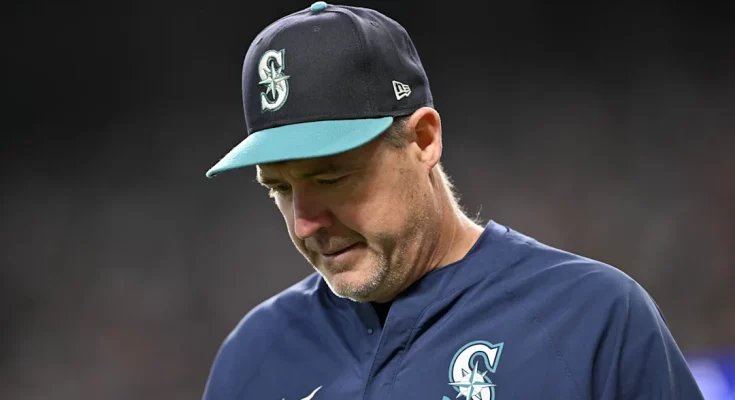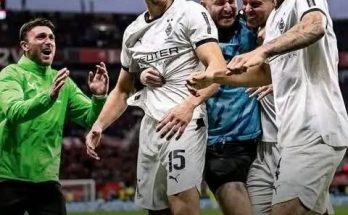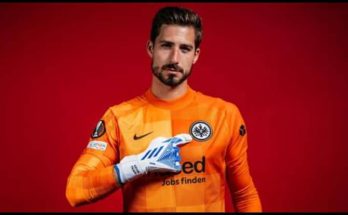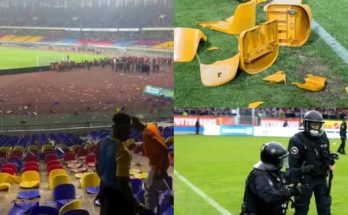The Miami Marlins find themselves at a familiar crossroads as they look towards the upcoming offseason, a period that traditionally has been marked more by parsimony than aggressive pursuit of talent. Yet, the current landscape of their roster, coupled with a nascent sense of proximity to genuine contention, presents a unique inflection point. The glaring need at first base, underscored by Eric Wagaman’s anemic .622 OPS, demands immediate attention. Wagaman, despite his efforts, simply hasn’t provided the offensive impact required from a corner infielder in a competitive lineup. While the team might consider giving Connor Norby, currently rehabilitating from hand surgery, another opportunity at third base, the first base void remains undeniable, a gaping hole that cannot be filled by internal options alone if the Marlins are truly serious about climbing the National League East ladder. Norby’s recovery timeline, typically 6-8 weeks for a broken hamate bone, would ideally see him ready for spring training, but regaining full power can be a longer process, further emphasizing the need for robust offensive additions elsewhere.
The Marlins’ historical reluctance to splurge in free agency is a well-documented narrative, a frugal philosophy that has often left their fanbase frustrated and their roster perpetually on the cusp rather than over it. However, the current roster, with its promising young pitching, burgeoning talent in the middle infield, and flashes of brilliance in the outfield, suggests that a more aggressive approach this winter could finally push them into sustained relevance. The question then becomes: can the Fish truly break the mold, or will they revert to their fiscally conservative habits, settling for stopgaps and hoping for lightning to strike twice with under-the-radar acquisitions? The answer to that question will largely dictate their trajectory in the coming years.
One intriguing possibility that could signify a shift in this ingrained organizational philosophy, and simultaneously address the first base dilemma, is a reunion with Josh Naylor. Naylor, currently a first baseman for the Seattle Mariners, was originally drafted by the Marlins 12th overall in the 2015 MLB Draft. His journey since leaving Miami has been a testament to his resilience and developing power. Traded to the San Diego Padres in 2016 as part of a package for Andrew Cashner, Naylor eventually found his stride and has evolved into a formidable left-handed bat. He has consistently put up respectable numbers, demonstrating both power and an ability to get on base, precisely the attributes the Marlins desperately lack at first base.
Naylor’s career trajectory showcases a player who has overcome early setbacks, including an unfortunate incident with a knife in the minor leagues during his time with the Marlins that resulted in a suspension. He matured as a player and person, blossoming into a reliable offensive presence. His current contract with the Mariners, which sees him earning $10.9 million this year and set to become a free agent at season’s end, makes him an attractive target. He’s proven his ability to hit for average and power, sporting an .807 OPS with 11 home runs and 59 RBIs in 93 games with the Mariners since being acquired recently from the Diamondbacks, where he was hitting .292/.360/.447 before the trade. These are numbers that would instantly elevate the Marlins’ lineup.
The prospect of Naylor returning to the organization that drafted him carries a certain poetic justice. It would not only address a pressing roster need but also serve as a symbolic gesture, indicating a willingness to invest in proven talent, even if that talent was once part of their own system. For Naylor, returning to Miami could offer a sense of unfinished business, an opportunity to truly contribute to the club that first saw his potential. While his brief stint in the Marlins’ minor league system was marked by that incident, his subsequent success elsewhere suggests a maturity and focus that could now thrive in South Florida.
However, acquiring Naylor or any significant free agent will necessitate a departure from the Marlins’ usual offseason strategy. Recent history has seen the Marlins as one of the most fiscally conservative teams in baseball, often the last, if not the only, team to refrain from substantial free-agent spending. The 2024-2025 offseason, for instance, saw them make minimal moves, focusing on minor league acquisitions and split contracts, even as they parted ways with key players like Luis Arraez and Jazz Chisholm Jr., moves that raised questions about their commitment to immediate competitiveness. This pattern of penny-pinching has undoubtedly hampered their ability to capitalize on their promising young pitching staff and the flashes of offensive potential elsewhere on the roster.
The argument for the Marlins to finally open their wallets stems from the idea that they are “close to seriously contending.” This phrase implies a window of opportunity, a period where their current core of talent is ripe for a playoff push. With a rotation featuring young, electric arms and a developing offensive core, injecting a proven hitter like Naylor could be the catalyst that transforms them from a fringe contender into a legitimate threat in the National League. The competitive nature of the NL East, with powerhouses like the Braves and Phillies, demands a proactive approach. Simply hoping their existing talent develops at a rapid pace may no longer be sufficient.
The financial commitment to Naylor would certainly be more substantial than what the Marlins have typically been willing to undertake. As a free agent who has demonstrated consistent offensive production, he will command a multi-year deal with an annual average value likely in the double-digit millions. For a franchise that has consistently operated with one of the lowest payrolls in the league, this would represent a significant investment. However, viewed through the lens of maximizing their current contention window, it’s an investment that could pay dividends. A strong first baseman who can drive in runs and provide a consistent presence in the middle of the order would take immense pressure off other young hitters and allow the lineup to flow more effectively.
Beyond the immediate impact on the field, signing a player of Naylor’s caliber could also have a ripple effect on the perception of the franchise. A willingness to spend on a quality free agent would signal to both the fanbase and the rest of the league that the Marlins are serious about winning. It could generate excitement, boost attendance, and attract other potential free agents down the line. The narrative of the perennially rebuilding Marlins would begin to shift towards one of a legitimate, ambitious organization.
Of course, there are always inherent risks with any significant free-agent signing. Performance regression, injury, or simply a player not meshing with a new team are all possibilities. Furthermore, the Marlins would need to ensure that a Naylor signing doesn’t preclude them from addressing other areas of need, such as bullpen depth or additional offensive pieces. A holistic approach to roster construction remains paramount, even with a marquee signing.
Ultimately, the decision to pursue Josh Naylor, or any high-profile free agent, rests on the Marlins’ ownership and front office. It demands a fundamental reevaluation of their long-standing financial philosophy. If they genuinely believe they are close to contending, then the time for cautious spending and hoping for internal miracles has passed. The opportunity to bring back a former prospect who has blossomed into a proven commodity, and in doing so, address a critical roster weakness, is a compelling one. It would not only improve their chances on the field but also send a powerful message about their commitment to winning, potentially ushering in a new era for baseball in South Florida, an era where winning is not just a hope, but an expectation backed by strategic investment. The ball, quite literally, is in their court.



